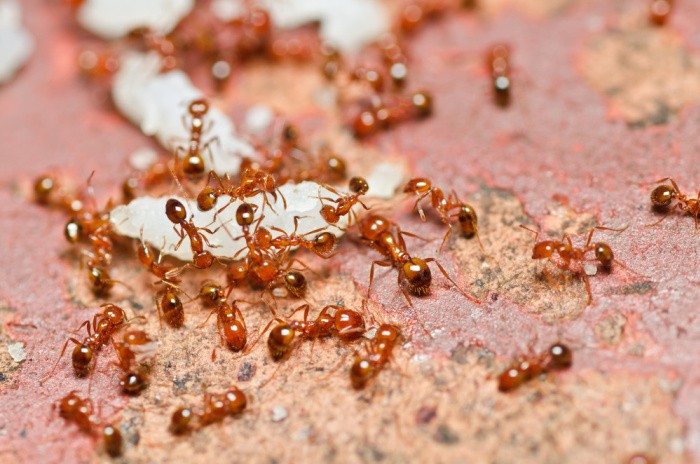Spanish Flu: What You May Not Know
The Spanish Flu was a pandemic in 1918. It was the deadliest in history. In light of the pandemic we are all experiencing, it is important to go back in history.
Not only to see what they did that could help us today, but to see how much worse this could be than what it actually is. This is a great way to see where we have been, what we have come from, and where we are going.
Spanish Flu History
The Spanish Flu infected an estimated 500 million people across the entire world. That was about one-third of our population at the time. Additionally, it took the lives of 20 to 50 million people, 675,000 of those people were Americans.
At the time that this deadly virus swept across Europe, Asia, the U.S. and around the world, we had no effective drugs or vaccines to kill it. Our citizens were ordered to wear masks.
Schools, theatres, and businesses were shattered. Bodies began to pile up in makeshift morgues before the virus finally ran its course.
In fact, this virus wasn’t just hitting the immune-compromised and elderly; it was striking down healthy, young people, too. This included many of our U.S. soldiers. Amazingly, 40% of the Navy became ill with the Spanish flu, which only helped to spread the virus.
Where Did it Come From?
Although it is called the Spanish Flu, it didn’t actually originate from Spain. Because of free media in Spain, they were the only ones reporting on the flu. Therefore, many people believed that is where it originated.
However, we still are not sure exactly where it came from. It is speculated that it came from China, France, Britain, or the U.S. The first known case was reported in Kansas (a state in the US).
Public Health in 1918
Life was a lot different in 1918 than it is today. There was still a lot we didn’t know about bacteria and viruses, and a lot of medical advances we didn’t have. Here are a few facts about public health in 1918:
- We did not know the flu was caused by a virus called influenza. In fact, a scientist named Richard Pfeiffer thought it was caused by bacteria. It wasn’t until 1933 that we learned the flu was actually a viral infection.
- Bacterial antibiotics were still 10 years from being discovered. We didn’t have antibiotics to treat pneumonia infections until 1928.
- There was no such thing as antiviral drugs. In fact, antiviral drugs were still decades from being discovered. They came out in 1963.
- We didn’t have The WHO. The World Health Organization was not even thought of back then.
- Most countries in Europe were under war. This limited the spread of accurate and life-saving information during the pandemic.
With that being said, we are in far better shape in 2020 than we were back in 1918.
What is the Spanish Flu?
The Spanish flu was caused by an influenza virus. It was actually a form of the H1N1 virus with genes of avian origin (from birds). Therefore, it was closely related to the H1N1 of the 21st century, or what we know as the swine flu. However, it was much deadlier. CDC 1918 Spanish flu information
Spanish Flu Symptoms
The Spanish Flu had very unusual symptoms that people had never really experienced with any other pandemic. Originally, the symptoms were misdiagnosed as dengue, cholera, or typhoid.
This was because symptoms had striking complications, such as hemorrhage from mucous membranes like the nose, stomach, and intestine. There was bleeding from the ears and petechial hemorrhages in the skin.
Additionally, the majority of the deaths were caused by people acquiring bacterial pneumonia as a secondary infection that was caused by the influenza.
Related: Pneumonia: What You Need to Know
How they Flattened the Curve in 1918
We weren’t as educated about viruses back then, but we still tried to flatten that curve. Their first attempt was a campaign telling people they could not cough, spit, or sneeze in public.
However, like many of us today, some people didn’t think it was necessary to flatten the curve and Philadelphia decided to have a parade with 200,000 people in attendance.
Almost a month after the parade, people started dropping like flies, schools, churches, theatres, and public gathering spaces were all shut down. Sound familiar?! Additionally, people were required to wear face masks and protective gear when going out.
Of course, as we see today, people were ignoring the guidelines. So, fines of $10 to anyone not wearing protective gear were given. There were very strict guidelines given and the government cracked down on people violating those guidelines.
At that point, with strict closures and guidelines, the interventions slowed the transmission rate by 30% to 50%. All the way back in 1918, studies found that the best way to flatten the curve was SOCIAL DISTANCING. You can find this information on the National Geographic website.
Pandemic Flu Stats
Since this 1918 pandemic, there have been 3 other pandemics. One in 1957, one in 1968, and one in 2009. With what we learned from the 1918 pandemic, we have used the information to combat the spread of our other pandemic ailments.
And, each one has had a significantly less mortality rate than the 1918 pandemic. Check out this chart and see how learning about social distancing and viruses has helped us with other pandemics:
| Pandemic | Year | Death Toll | Virus subtype |
| Spanish Flu | 1918 | 50 million | H1N1 |
| Asian Flu | 1957 | 1.5 to 2 million | H2N2 |
| Hong Kong Flu | 1968 | 1 million | H3N2 |
| Swine Flu | 2009 | About 18,000 | Novel H1N1 |
Death tolls have drastically dropped with each new pandemic, as you can see. We went from 50 million down to just 18k lives lost, which is still significant, particularly for the families involves.
Spanish Flu Vs Coronavirus: Similarities and Differences
So, what are the similarities and differences between the Coronavirus pandemic and the 1918 Spanish Flu pandemic? Well, there are a lot of differences, but we do have some similarities. Please refer to the CDC for accurate information on COVID-19.
Similarities
Both the Spanish Flu and the Coronavirus were novel viruses or new strains. They are similar in the fact that social distancing helps to flatten the curve and that they are both viruses that cause pneumonia as a secondary infection.
Differences
Along with the similarities, there are a plethora of differences. Here are some of the differences we are seeing:
- The Spanish Flu hit the young harder than the old. The coronavirus, on the other hand, is hitting the old more severely than the young.
- The Spanish flu had very severe symptoms for most, whereas the Coronavirus has mild symptoms for most who test positive.
- They are two different viruses. Spanish Flu is caused by the influenza virus whereas the Novel Coronavirus is a strain of Coronaviruses.
With social distancing, aggressive testing, and quarantine measures, the COVID-19 situation hopefully will not get to the loss of life point where the Spanish Flu did, which is probably the biggest difference.
Final Word
History finds a way of repeating itself, which means when we are faced with a dilemma, it is important to look back and see what worked and what didn’t.
Currently, in 2020 we are fighting this coronavirus in the same way that worked with the Spanish Flu; social distancing! One day this pandemic will go down in history too.
We will look back and see what we learned from the past and get through it. May God bless this world, Linda
Copyright Images: Spanish Flu AdobeStock_318708108 by Shane






















But the economy was not shut down in 1918 as it is today. Social distancing, YES, enforced shutdown, NO.
Isn’t the economy itself an “essential business” that needs to live? (Or does the cure truly have to be worse than the problem?)
Hi Citizen, you are right on the economy back then not being an enforced shutdown. At the time we were more of an agricultural society and without all the global implications. In every disaster or emergency situation there’s always the negative side. We would have loved to have won WWII without all the lives being lost. Crazy times, stay safe. Linda
Linda, I think there is an error in the date for the Asian flu? Is it 1857 or 1957?
Hi Carol, thankfully someone told me a few hours ago, thanks for the heads up. It’s fixed, but you know I appreciate you telling me. My fingers don’t type as well as they used to. Thanks for letting me know. Linda
Great article, Linda. I recently read a book about the Spanish Flu, and was struck by the similarities to what we are now experiencing. Even though it was 100 years ago, all our technological advances can’t save us from a tiny virus! I want to thank you for sharing your wisdom through the years; because of you, my family is well prepared to weather this storm.
Hi Roxanne, oh you are so kind, thank you! It’s so nice to know that we are prepared for what comes our way. And boy, is this a storm! God bless this world, Linda
“With that being said, we are in far better shape in 2020 than we were back in 1918.”
In many, many ways we ARE in better shape in 2020 than in 1918. BUT, with technology we are also getting a lot of misinformation!! That misinformation sometimes can be nearly as detrimental as COVID-19 itself. I’ve heard people say it is a hoax, that is is blown all out of proportion and variations on those themes. And, as long as there are a few who believe it is a hoax or blown out of proportion and don’t heed the social distancing, wearing masks, etc., we will have this thing passed around and around.
My nephew and his wife kicked one of their sons out of the house because he kept going out to his friend’s homes, partying and such. My nephew and his wife are not quite to the senior stage in life but my nephew has asthma and is immune compromised. They had to kick the son out to remain as safe as possible. He is one who believes he will not get sick because he is in his 20s but what he doesn’t realize is that if he brings it home, he could kill his parents or at the very least, his father.
So, in ways we are far and away better than in 1918 but in other ways we are not.
Hi Leanne, great comment, of course, we have better medical personnel compared to back then as well. I just wrote that article t make people remember the pandemics we have had in the past to compare to today. Life is crazy right now. If everyone would stay home, we may be able to kick this. Linda
Hi Linda,
In answer to your question about the true date of the Asian Flu, it was in “1957”. I know, because I had the Asian Flu in 1957. Let me tell you, my dear, I was soooo sick, I thought I would die. And wish that I had. It took me three weeks to recover completely and pray that I am never that sick again.
I wish there was something that I could broadcast to every citizen about how foolish they are by not wearing a mask when leaving their homes. The thing that these people are not realizing is this. They may NEVER have any symptoms themselves. HOWEVER, they can be a deadly carrier of the disease.
Well, I can’t do that, so I will avoid those people as much as possible and continue to say my prayers.
For you and yours, please stay home, stay safe, stay well.
HI Suzanne, yes, I knew it was 1957, it was a typo. Sometimes I’m typing at 2:00 in the morning trying to get the post ready for a 5:00 a.m. publish timeline. I’m so glad you survived it. I pray it never comes back. Three weeks is a long time to be sick and thankfully you recovered. It is scary that some people are not taking this virus scary. That’s why I made that timeline. The worst pandemics in order of years that they happened. I really wanted people to compare the different years in numerical order. Crazy times right now. Stay well, Linda
An excellent book on the Spanish Flu is “Pandemic 1918,” by Catharine Arnold.
There’s an interesting theory (with excellent reasoning, though I don’t know how one would actually go about testing it including the actual virus! (Or who would volunteer…) Without in the least minimizing the ferocity of the Spanish Flu, it involves a relatively new “wonder drug” that was widely used during the Spanish Flu. Aspirin. Invented by Bayer, it was just off its patent a few years before the war, so it was cheap and readily available worldwide–and it was widely and heavily used. Heavily, as in an aspirin an hour, for days–verified through the notes and diaries of doctors, and the advice given in medical journals of the time.
We now know, of course, that such dosages are highly dangerous. Aspirin depletes the body of vit. C, essentially causing a rapid-onset scurvy. Those unusual conditions presented during the Spanish Flu–the nosebleeds, projectile vomiting of blood (bleeding ulcers), petechiae, blood in the lungs (the so-common death by asphyxiation) all could have been caused by aspirin use resulting in rapid-onset scurvy–breakdown of the connective tissue.
Another curious condition in the Spanish Flu was that of the patient who had the flu, appeared to be convalescing nicely, only to suffer a relapse and die within hours. This, too, could have been attributable to aspirin, given to lower fever and relieve body aches. The body can produce its own antiviral–I believe it’s interferon–but only when there is fever. When aspirin was given, yes, the fever went down, the aches disappeared, the patient did feel better–but without some fever, there was no antiviral, and the virus multiplied until the body was overwhelmed.
One more horror of that 1918 pandemic…
HI Rhonda, wow, this is powerful! Now, I want to read that book. Aspirin, oh my gosh. It does make sense. WOW, finding the book now! Thank you, Linda
Unfortunately this book doesn’t mention the aspirin (other than a passing mention of one or two individuals who took aspirin and died soon after). I ran across the connection in a couple of different articles a few years back–probably could locate it again on-line!
My other recent read is “The Plague and the Fire”, London in the bubonic plague of 1665 and the great fire of 1666. (Actually a re-read–my mother handed it to me when I was a kid!) This coronavirus is *nothing* compared to the plague…
Thank you, Linda